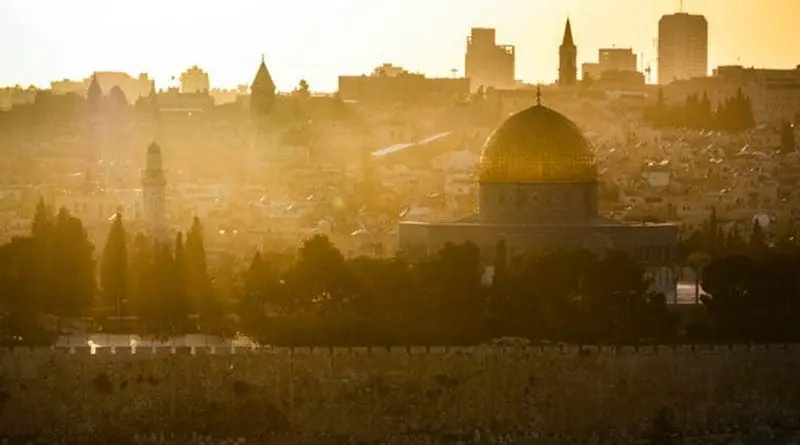When In The Holy Land – OpEd
By MIFTAH
By Julie Holm
For me, Easter is all about skiing in the Norwegian mountains, eating oranges and chocolate and – when I was younger – about the Easter Bunny hiding chocolate eggs in the garden for me to find. But this year I thought: “when in the holy land…” and a friend and I went to Jerusalem to discover what Easter is all about here.
When we arrived in the Old City of Jerusalem we realised that we might have chosen the wrong day, as there were very few signs of Easter anywhere. We went to the Church of the Holy Sepulchre together with tourists from all over the world; some were there to pray and visit the holy sites while others were more interested in the historic and cultural value of the place. Walking from room to room in this beautiful building I felt a certain calmness and peace, in spite of all the tourists taking pictures, praying, and walking around with their guidebooks. It was nice to enter the church and leave the constant reminders of occupation and oppression at the door, if only for a while.
After the church we walked around in the narrow streets of the Old City, away from the tourists and away from the vendors trying to sell us everything from earrings and scarves to coffee and spices. It is incredible how at one moment you can be surrounded by chaos, smells and sounds, almost not able to walk forward from the crowd of people, and the next moment everything is quiet and beautiful and it feels like a completely different place on earth. It is these contrasts that attract me in the Old City of Jerusalem; the mixture of old and new, time-honoured and modern, and all the different cultures, traditions and religions that are somehow woven together as you walk from one quarter to the next.
We turned a corner and walked past a Danish couple who were lost, trying to find the way back to their hotel and suddenly their bickering was replaced with the sound of music. Following the tune we ended up at the entrance of a church, well hidden behind a gate and a small courtyard. We snuck in and found a seat in the back row, realizing that besides the musicians we were almost the only ones not affiliated to the church. Most of the other listeners were nuns and priests.
The music filled the church beautifully and we enjoyed the cool air and serene atmosphere. I was happy to find some peace and quiet contrasting the bustle of the hot streets outside and the stress of my everyday life. Then, just when my mind had drifted away from ‘the real world’ outside the church, what happened next surprised me. The priest residing over the services got up and addressed the orchestra in bad German. “Danke schon,” he said to the orchestra, who were apparently from Germany; “Thank you for coming to play in our church. Your music reminds us that there is more to the holy land than just walls and checkpoints,” he continued. “You are playing for peace. And to us, peace means freedom, freedom for all; Christians, Muslims and Jews alike.”
I was astonished to hear these words. Surprised by the unexpected reminder that even in the holiest sites in the Holy Land you cannot escape reality, I realized that the priest was right; there is more to this place than walls and checkpoints. It is just easy to forget.
Julie Holm is a Writer for the Media and Information Department at the Palestinian Initiative for the Promotion of Global Dialogue and Democracy (MIFTAH). She can be contacted at [email protected].

